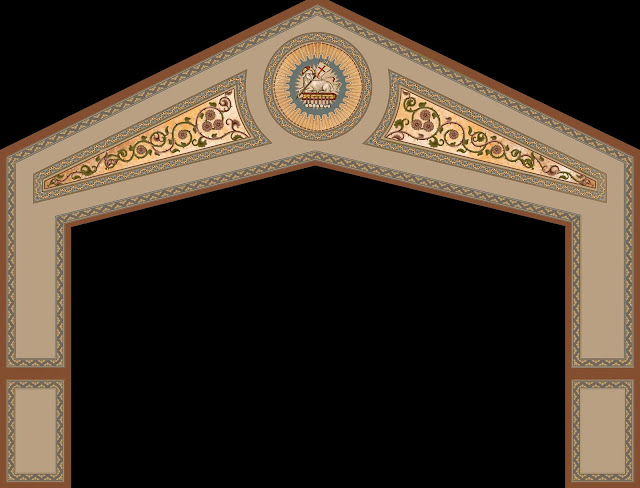It has been a little while since we've done a 'before and after' so I thought we would today briefly explore a work pursued by way of Conrad Schmitt Studios at St. Helen's Catholic Church in Vero Beach, Florida.
The church was founded in the 1950's, and certainly if you look at the church from around the 1960's you can see that time's influence. there we can see some of the influence of Liturgical Movement, with a nicely canopied altar, while the freestanding altar before it shows that this particular photo possibly dates to the later 1960's or early 1970's.
This might be considered the "before the before" photo. However of purposes, the actual "before" photo is shown here, dated to around 2016 or so:
Conrad Schmitt's proposal involved a decorative scheme which added colour and ornament on the walls. The project was treated in three phases, beginning with the altar and sanctuary, moving toward the triumphal arch and nave, and finally concluding with work on the ceiling.
The first phase saw a new forward altar put into place of a more traditional soarcophagul shape. Behind, this we see a new fixed altar installed with a short reredos, tabernacle, which is crowned by a ciborium proper. The crucifix was set onto a gold mosaic like backdrop. To either side of the altar is a fresco depicting twelve lambs, representative of the twelve apostles, while images of six-winged seraphim and Greek crosses were installed in the sanctuary ceiling. A new altar rail separating the presbytery from the nave was also installed.
Along the ceiling one will now also see a starry depiction, while various saints are also depicted along the nave, as well as two substantial murals related to the namesake of the church, St. Helen, the mother of the Emperor Constantine. On the one wall we see St. Helena finding the True Cross, while on the other we see her son Constantine's vision which, according to tradition, would lead to his conversion to Christianity.
In addition to these major components, other elements such as new Stations of the Cross were also installed.
The net result of these changes has transformed the parish from a relatively spartan, blank canvas, to instead rather be a colourful and imagery-rich experience whose sanctuary is also better arranged according to classic liturgical principles.
-------
Do you like Liturgical Arts Journal's original content? You can help support LAJ in its mission and vision to promote beauty in Catholic worship either by:
You choose the amount! Your support makes all the difference.






















